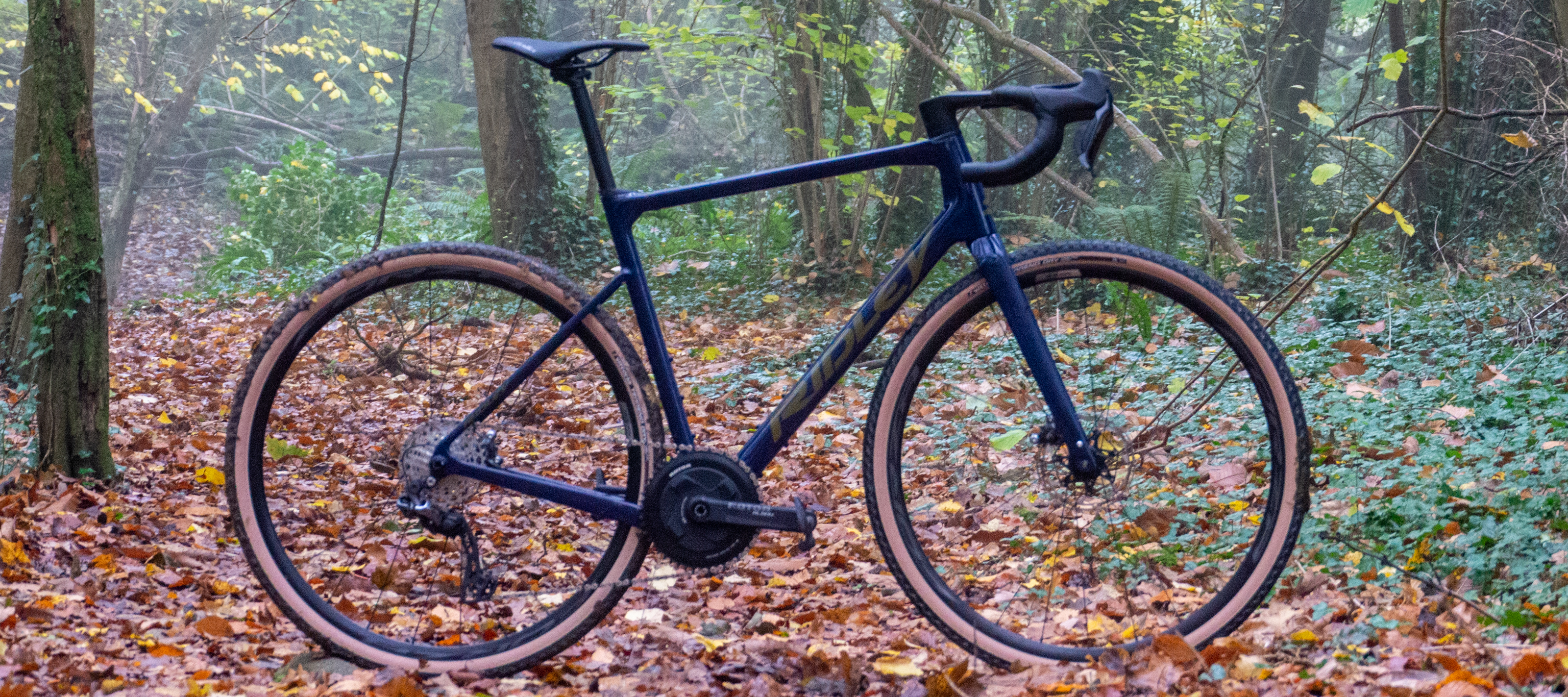Early Verdict
Pros
- +
Balanced geometry
- +
Ample mounting points
- +
Mudguard mounts
- +
Classified Powershift hub
- +
Integrated cockpit
Cons
- -
Tight clearance of rear tyre against the seat tube
You can trust Cyclingnews
Ridley has today announced a bike that it claims is a bike that puts an end to the N+1 rule. The so-called rule, for those unfamiliar, is in relation to the number of bikes one should own, where N is the number one currently owns. We're a hilarious bunch, eh?
Regardless, it is as entrenched in cycling as deeply as the tubular vs clincher debate or Eddy Merckx's claim that it never gets easier, you just go faster.
Ridley believes it has created a bike so versatile that the rule need no longer apply, suggesting that this bike can do it all. In reality, it's an 'all-road' bike, also known as 'gravel light' or 'road plus', even 'gnarmac' if you must. Pick your poison.
It's called the Grifn, reportedly named after the mythical beast, the griffin, which, with its lion body and eagle wings, symbolises the ruling over two realms. You can probably see where this is going, but I'll say it anyway: Ridley claims that "as a Grifn rider, you’ll reign both tarmac and dirt roads."
In seriousness, though, the Grifn does look like a really good option for anyone seeking a road bike that can handle wide tyres, rough roads, with the option to mount fenders, bikepacking bags and even internally routed Dynamo lights.
It's available in a variety of preconfigured specs, comprising Shimano 105 and GRX groupsets across both mechanical and electronic guises, and the price ranges from £2,909.00 for 105 mechanical or GRX600 to £4,279.00 for 105 Di2.
You can alternatively configure it with a GRX Di2 groupset paired with a Classified two-speed rear hub for €6,759.00 (GBP not confirmed) and pleasingly, that's what landed at Cyclingnews HQ. I've been putting it to the test for the past few weeks to see just how many realms I could conquer aboard this mythical little beast, and to try and work out if it should feature among our guide to the best road bikes, the best gravel bikes, neither, or both.
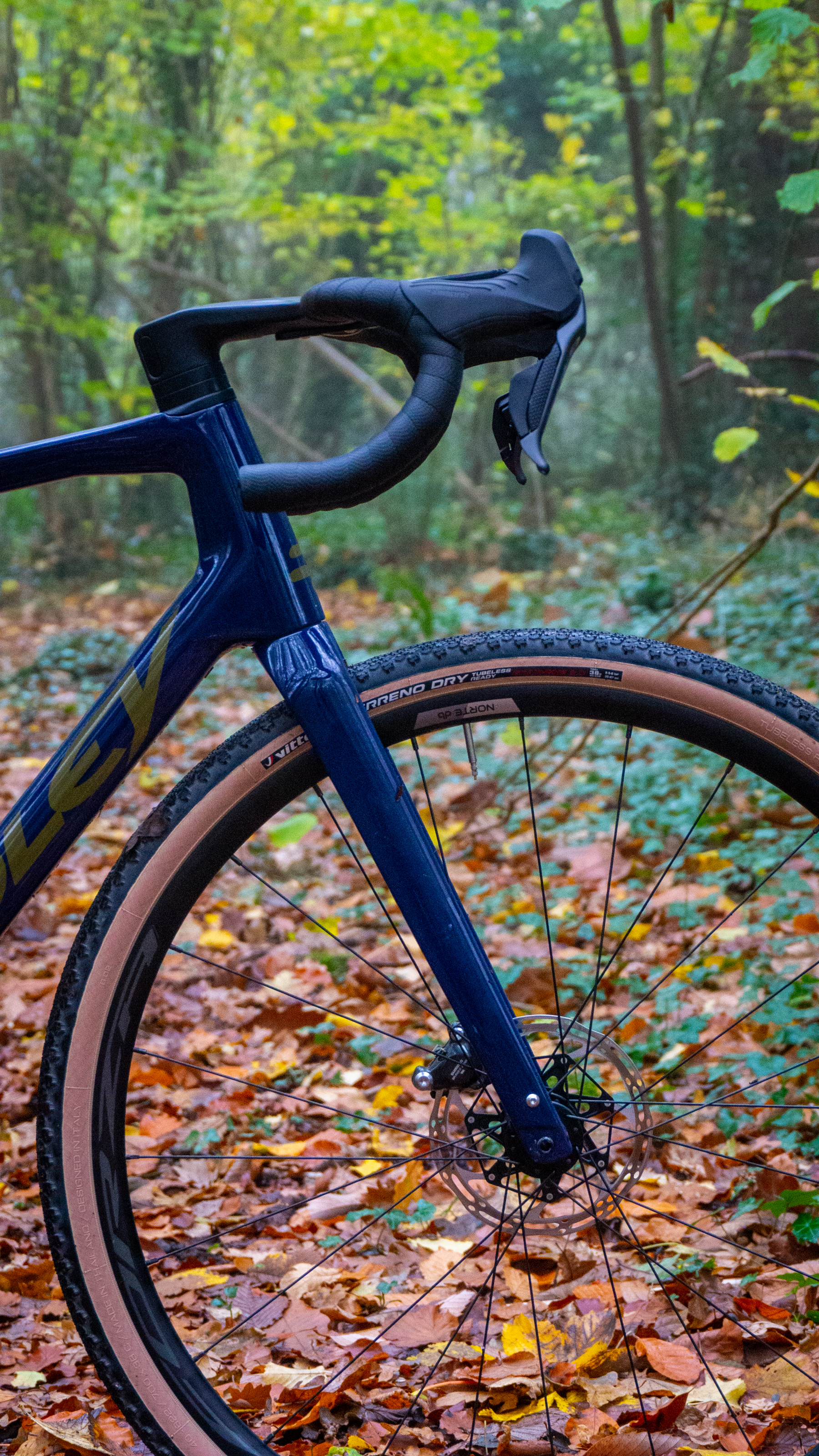
Design and specifications
I started my research not on the road, nor on the trail, but in the geometry charts provided by Ridley's very helpful pre-launch press release.
Comparing the Grifn against a variety of bikes, ranging from endurance road to all-out gravel, it appears the Grifn is more than just an endurance bike with fat tyres. In fact, a size medium has a stack of 587mm, with a reach of 391mm, suggesting it's more race-yourself than pace-yourself.
The head angle, meanwhile sits at 72 degrees; in between the Kanzo Fast gravel race bike and the Helium SLX road bike. Further back, the 73.5 degree seat angle is a little steeper than both of the aforementioned. These combined with the gravel-oriented bottom bracket drop, but road-leaning (ie short, but not too short) chainstay length all combine to suggest the Grifn could indeed spread its wings and soar on the road, without pressing the eject button at the first sign of turbulence. Check one for versatility, then.
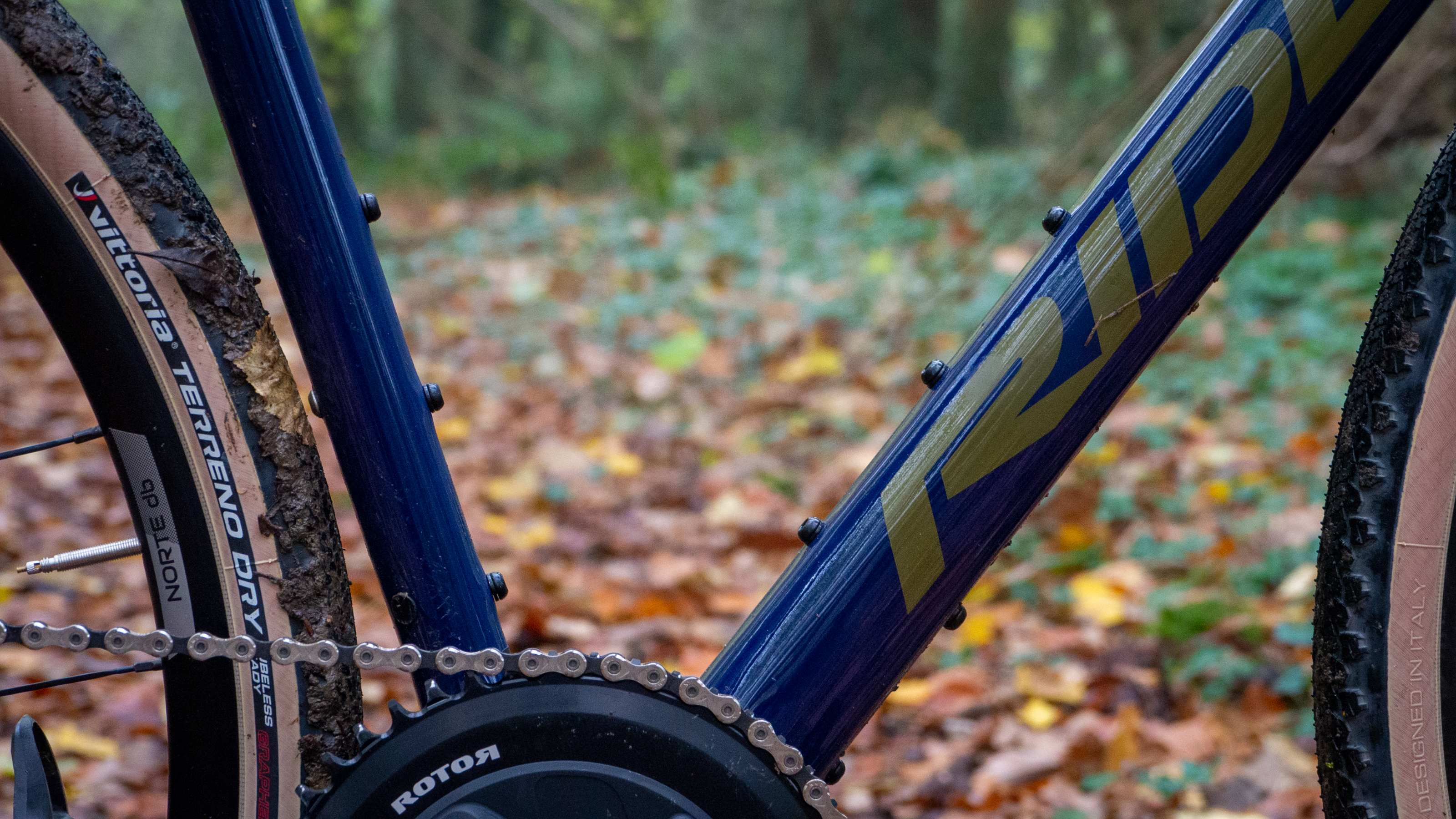
Check two, for me, comes in the bike's multitude of mounting points. There are three on the down tube, three on the seat tube, three underneath the down tube, and two more for a top tube bag behind the stem. Despite all this bling, the frame comes in under a kilo at a respectable 950g. It can also accommodate internally-routed cables for dynamo lights, making it even more suitable for multi-day adventurers.
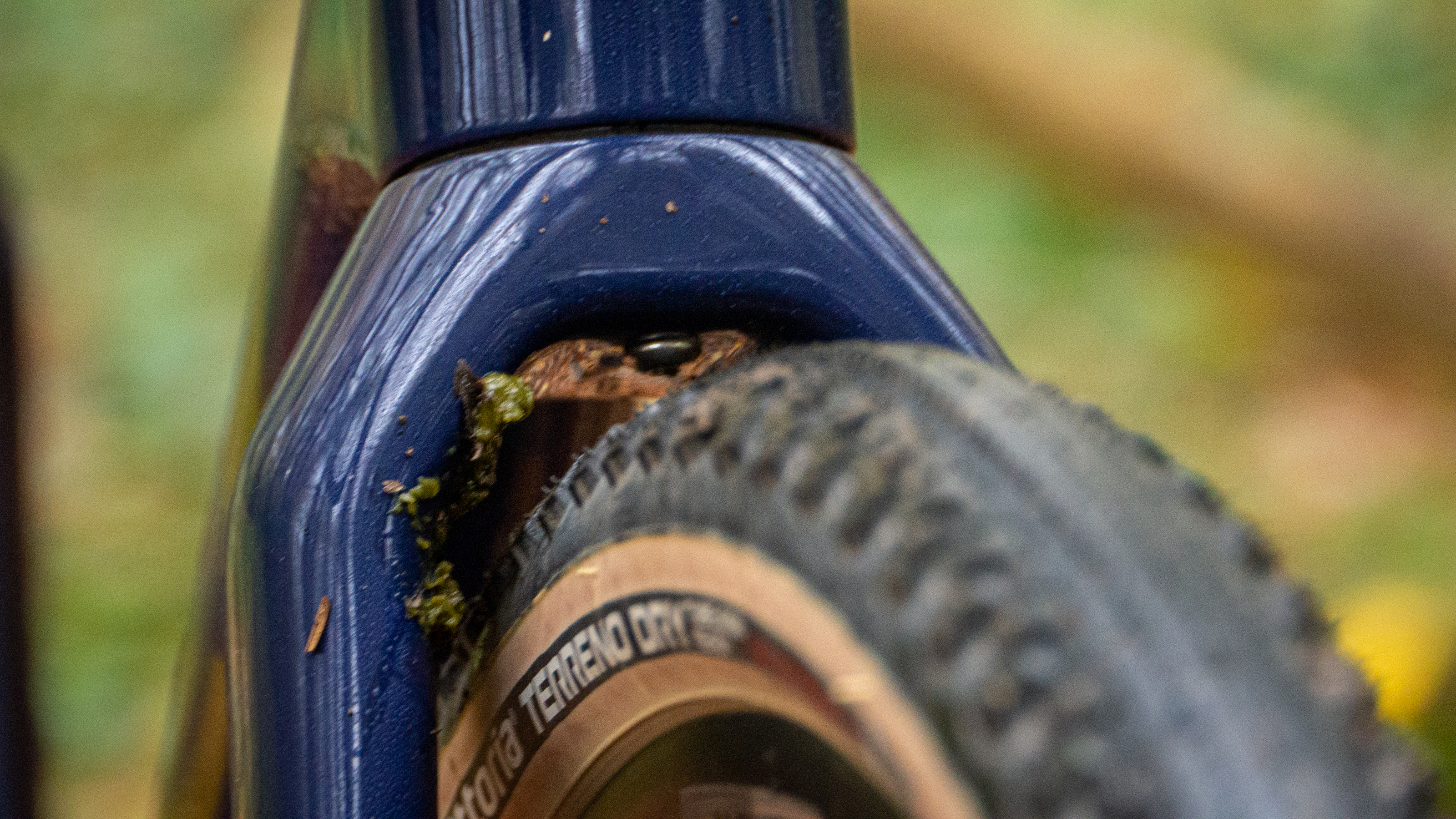
The up-to-40mm tyre clearance is a third positive, although tyres as wide as this are only available to those running a 1x groupset, as those with two chainrings will be restricted to 38mm.
My test bike is fitted with a Shimano GRX Di2 1x groupset and 38mm Vittoria Terreno Dry tyres, and though I should be able to go wider, the gap from the tyre to the seat tube was already small enough to clog up with leaves, as it did on a few occasions.
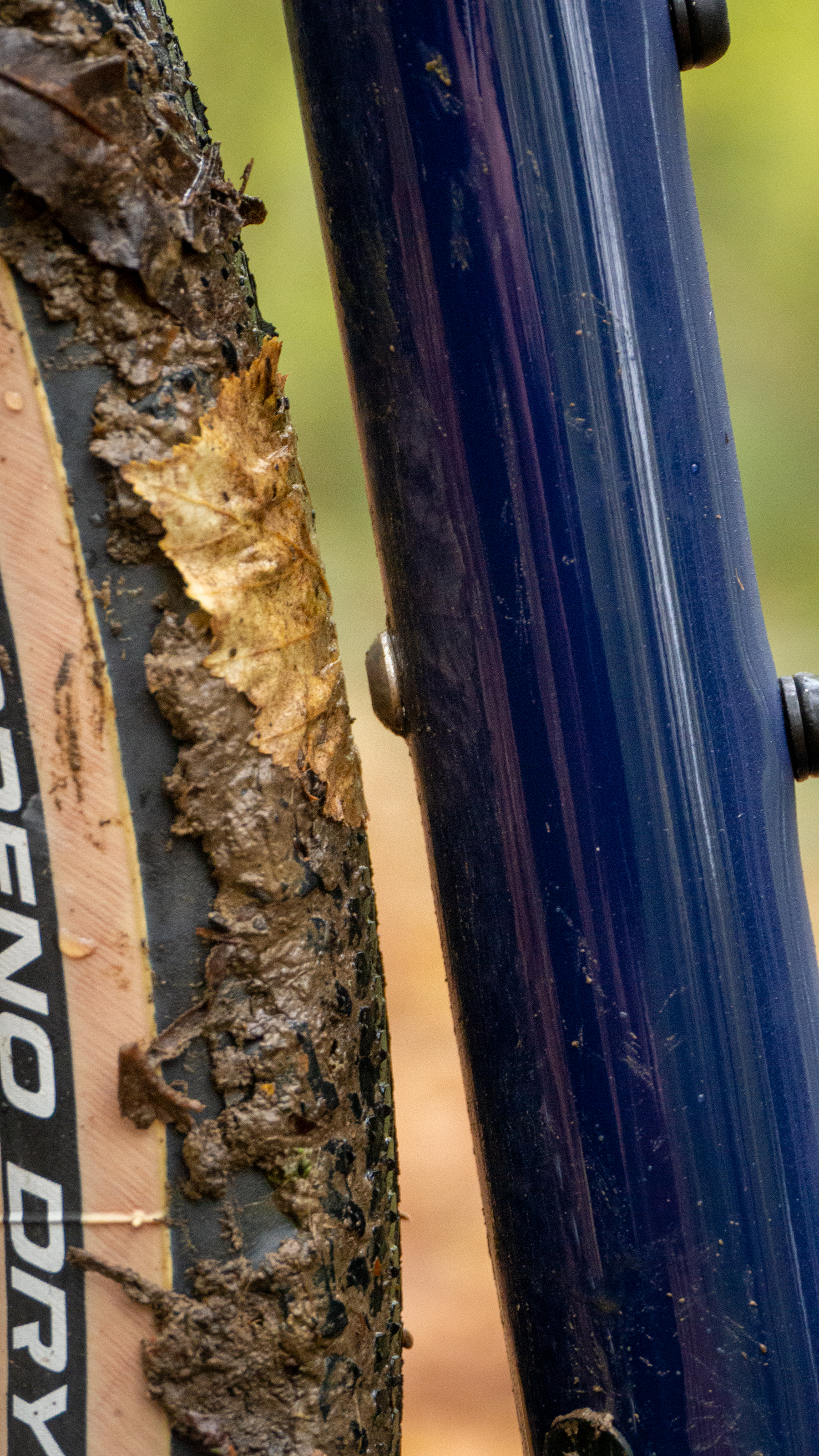
Those who want to run mudguards will need to go narrower again at 32mm tyres, but it's here that the Grifn earns yet another versatility badge of honour. By fitting mounting points for full-length mudguards, the Grifn becomes a stellar winter bike that can comfortably eat up the miles.
There's a one-piece integrated cockpit from Forza that adds to the aerodynamic on-road performance. Perhaps more notably, though, it also makes bar bags an easier thing to fit. Admittedly, it also makes maintenance a little tougher - or in my case, makes swapping from Euro to British brakes tougher - but given the minimal maintenance required on hydraulic brakes and GRX Di2, I believe it's a positive addition to this spec.
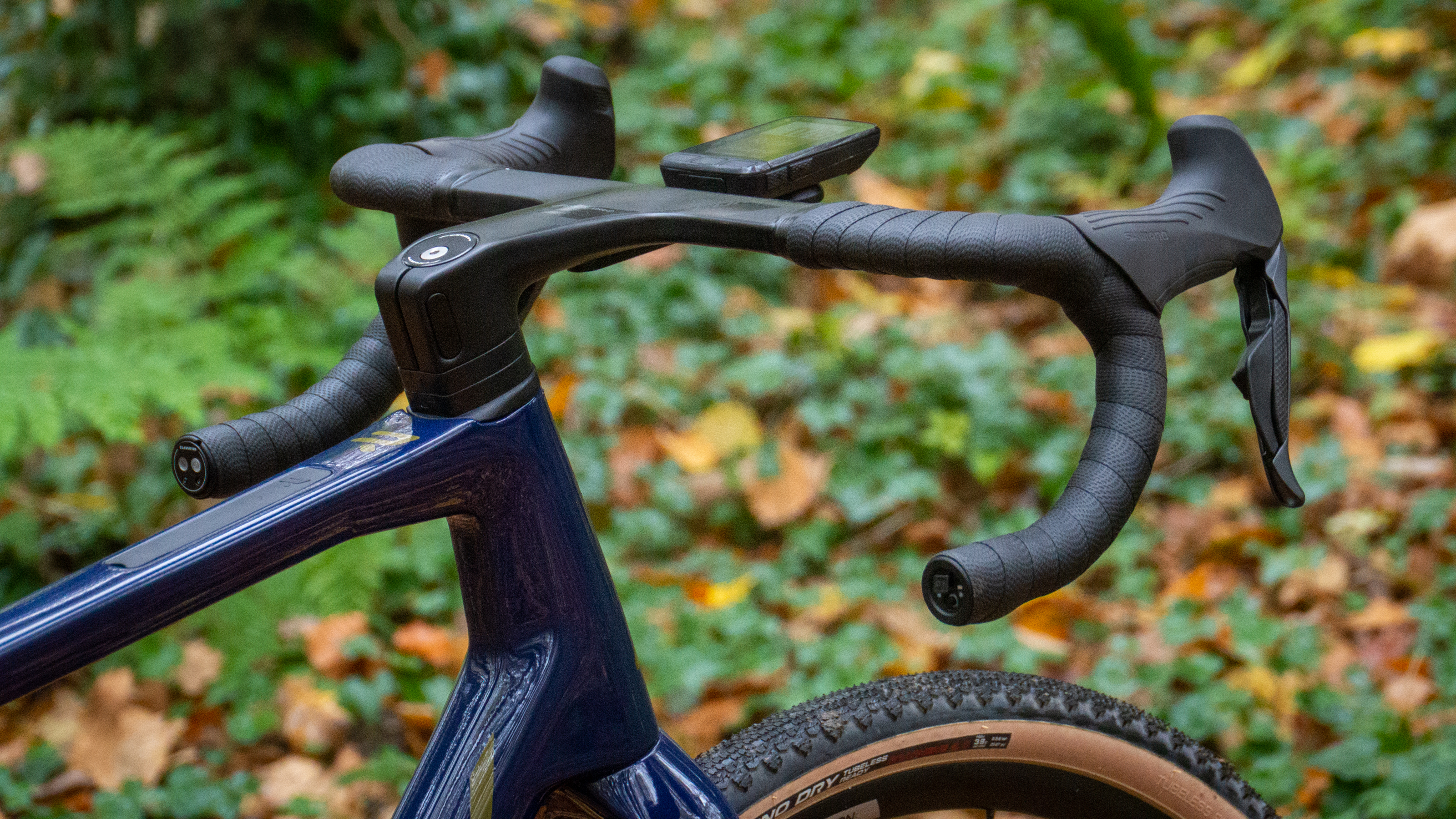
Moving finally onto the wheels, and it's here where I'm divided. They certainly stand out but for two very contrasting reasons. Firstly, the alloy Forza rims seem a little out of place – read low-spec – compared to the rest of the bike, which is bordering on superbike level. However, at the centre of the rear is the two-speed internally geared Powershift hub from Belgian brand, Classified. This replicates a two-speed chainset, but in a system that sits inside the rear hub, operates wirelessly, and changes gear almost instantly no matter the torque being applied through the pedals. I'm a huge fan of this product and think it could revolutionize groupset and bike design with wider adoption. I won't dwell on this too much, as we've covered it in depth in our Classified Powershift review.
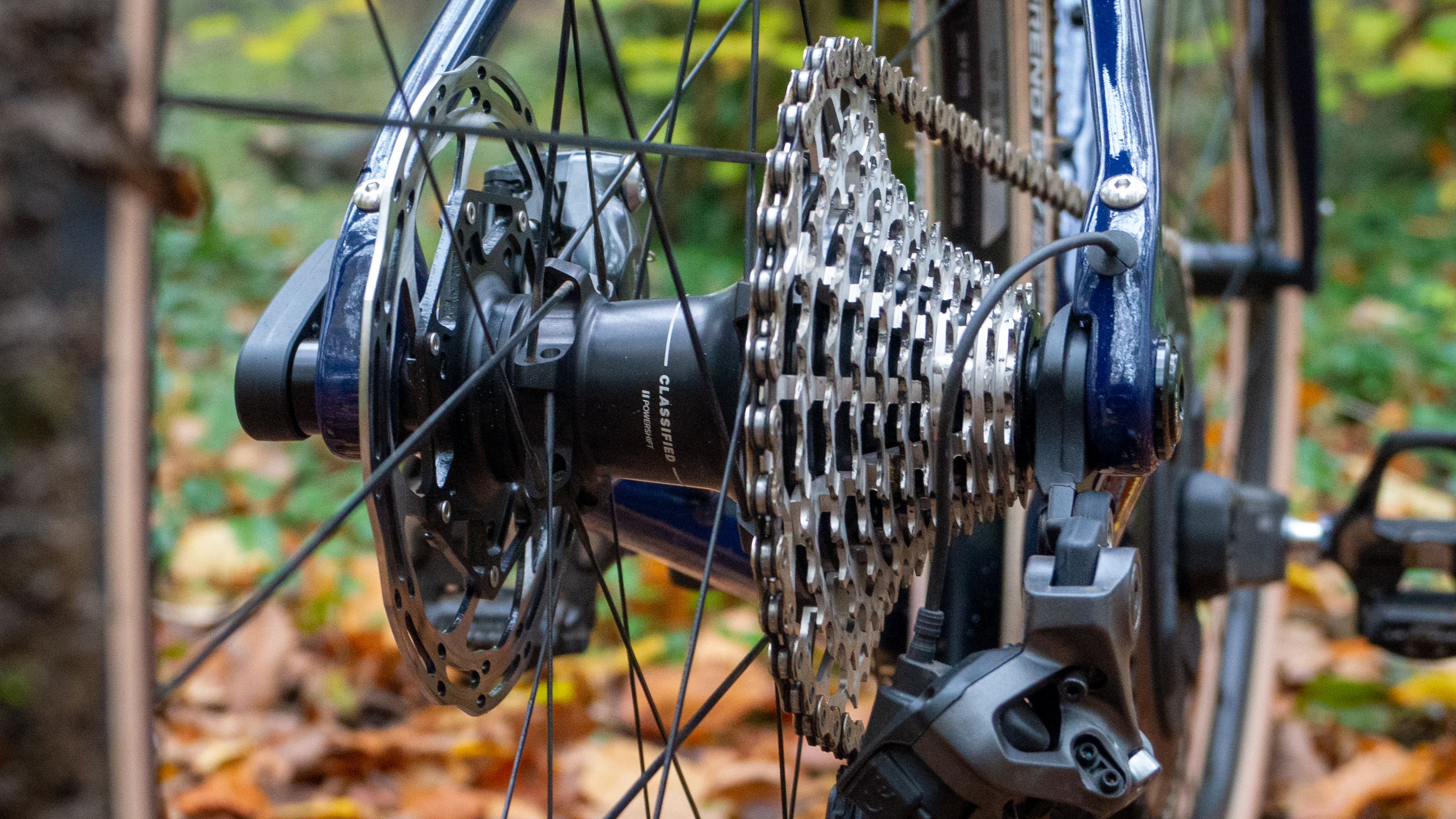
Performance
After just one ride, I've already successfully conquered the two realms that Ridley mentions; roads and dirt roads.
The road immediately yielded to the Grifn's sharp handling, responsive power transfer and aero cockpit. The bike is fitted with 38mm Vittoria Terreno Dry gravel tyres, but with a near smooth central strip of tread. They were a decent match for the wet and slightly slippery roads, adding confidence as I left my village straight into a 60km/h descent and around a tight bend. I like to use this corner as a test of how much confidence a bike inspires. A good road bike will hit 60kph on the descent and let me take the corner without touching the brakes. The Grifn passed the test.
The subsequent climb is around six minutes long on a road bike when I'm feeling good, so to crest the climb in seven minutes with gravel tyres after a long weekend of work was another win in my eyes.
From here, my route travelled to a gravel bike path - the dirt road - complete with slippery tree-covered areas of mud and plenty of puddles. I've ridden this on a road bike, and while Mathieu van der Poel will tell you a road bike can do gravel, I found myself dodging the rough stuff and ultimately going slower than if I could barge through.
I've ridden it on a 'proper' gravel bike too, but I always struggle to maintain a decent pace and often rue the slight uphill nature of this path. On the Grifn, it seemed like a Goldilocks balance. I was able to hold a decent pace on the smoother sections, and then carelessly blast through the rough ground without worrying about the state of my rims.
However, I know that gravel means different things to different people, and for me, a gravel bike isn't a success unless it can conquer the trails in my local woods. I appreciate this is an 'all road' bike, not a 'gravel' bike, but if the Fara F/AllRoad can handle them, then so should this.
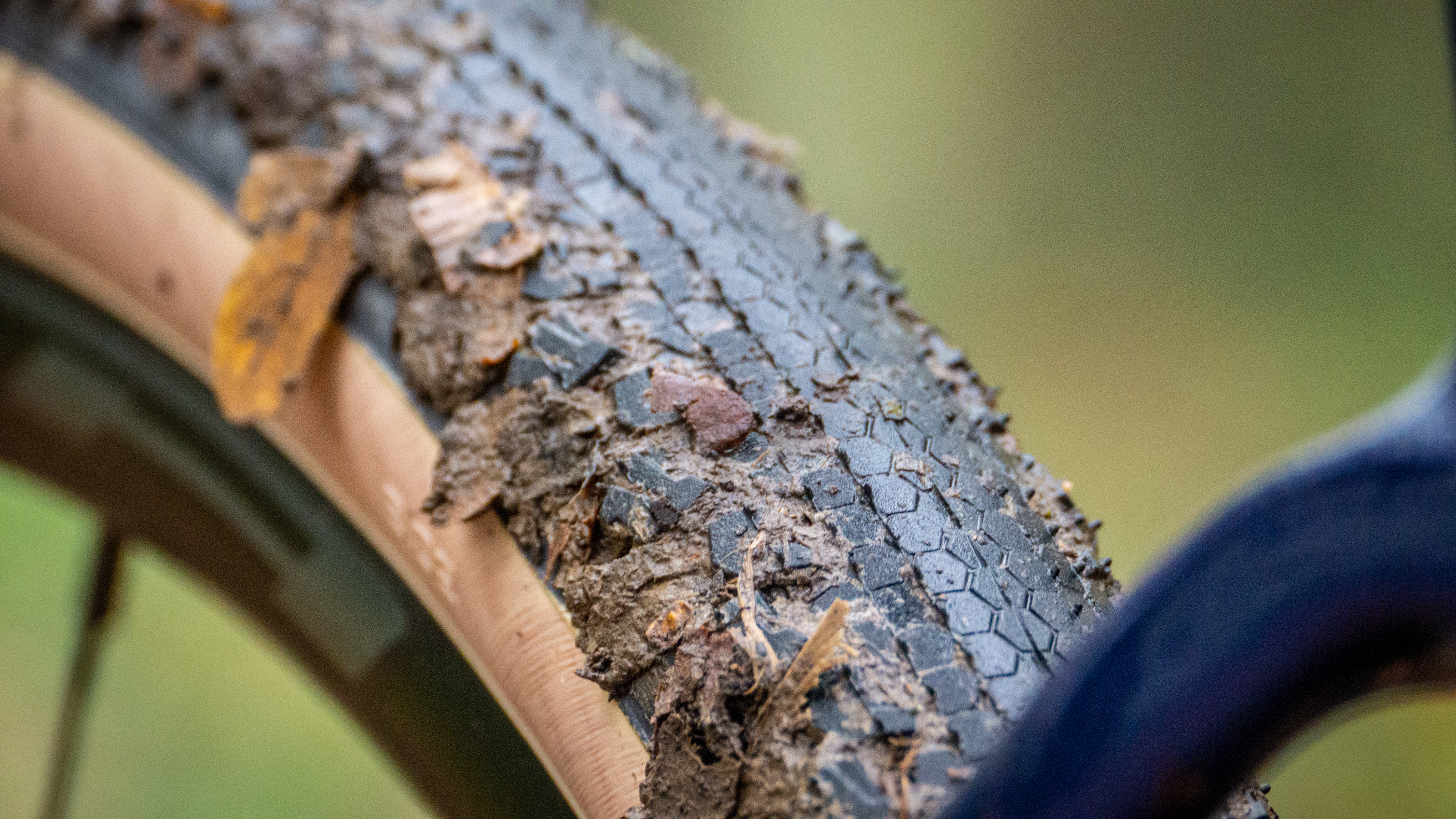
I tried, and the bike seemed up for the task at first, but unfortunately in a sodden autumnal woodland dressed in a blanket of fallen foliage, it was a task too demanding for the Vittoria Terreno Dry tyres. I'm not surprised though, nor disappointed, and it's certainly not a black mark against the Grifn's versatility.
But this is a first-ride review, not a thorough test. You can bet that I'll be back for another attempt with tyres more attuned to the environment, and like the Fara, I believe the Grifn will hold its own.
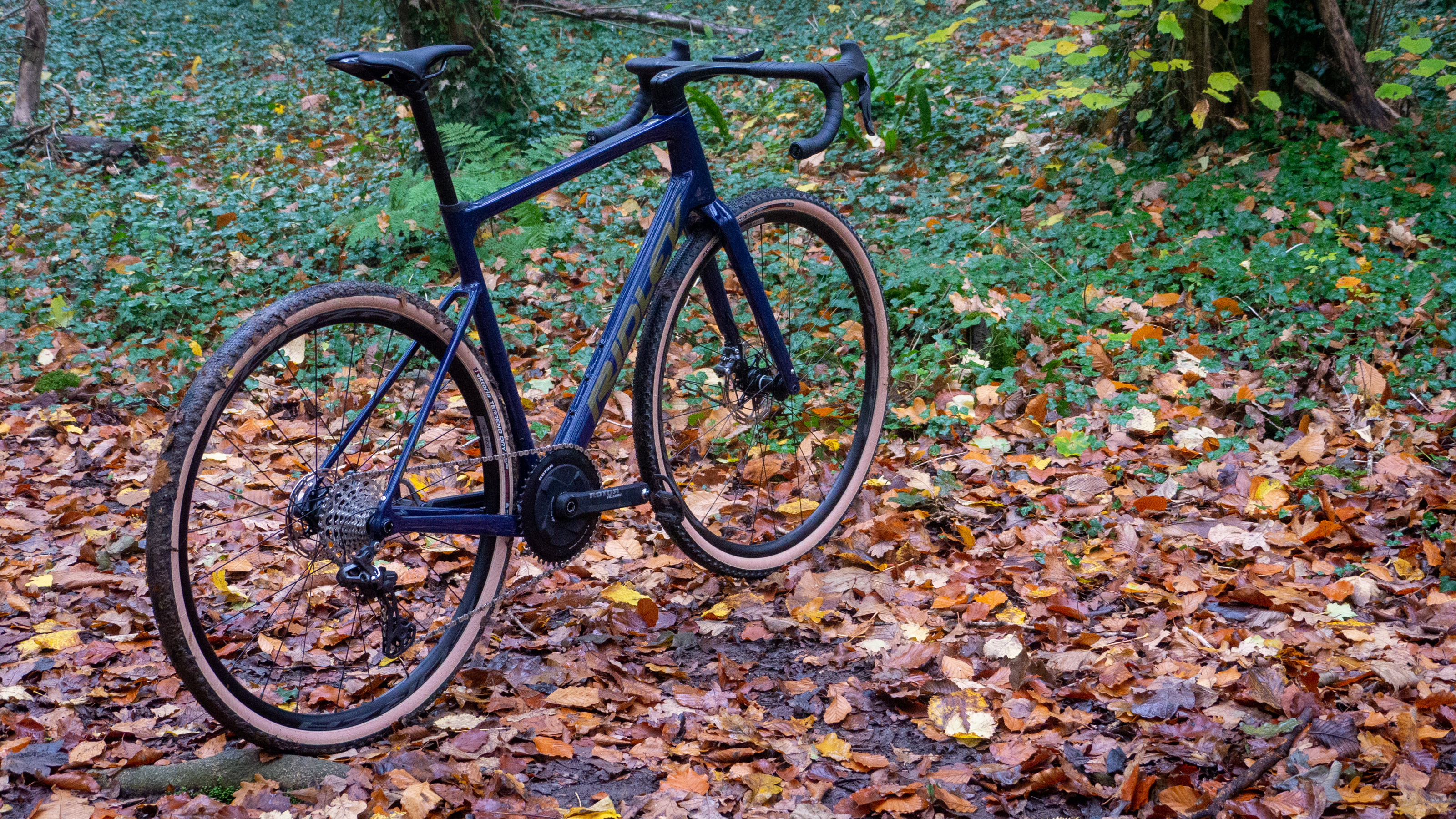
Early verdict
So far, the Grifn has really impressed. Whoever's designing bikes at Ridley at the moment really seems to have a clear vision of each model's position in the lineup. In a box-ticking exercise of choosing a bike, the Grifn has a lot going for it.
Balanced geometry, a well-specced groupset, mudguard mounts, mounting points for bottles and bags, ample tyre clearance, clean aesthetics and even an ability to run dynamo lights, this is a great bike on paper. So far, it's also been a great bike on road and light gravel, and at a fair price too.

Josh is Associate Editor of Cyclingnews – leading our content on the best bikes, kit and the latest breaking tech stories from the pro peloton. He has been with us since the summer of 2019 and throughout that time he's covered everything from buyer's guides and deals to the latest tech news and reviews.
On the bike, Josh has been riding and racing for over 15 years. He started out racing cross country in his teens back when 26-inch wheels and triple chainsets were still mainstream, but he found favour in road racing in his early 20s, racing at a local and national level for Somerset-based Team Tor 2000. These days he rides indoors for convenience and fitness, and outdoors for fun on road, gravel, 'cross and cross-country bikes, the latter usually with his two dogs in tow.
What is a hands on review?
'Hands on reviews' are a journalist's first impressions of a piece of kit based on spending some time with it. It may be just a few moments, or a few hours. The important thing is we have been able to play with it ourselves and can give you some sense of what it's like to use, even if it's only an embryonic view.
